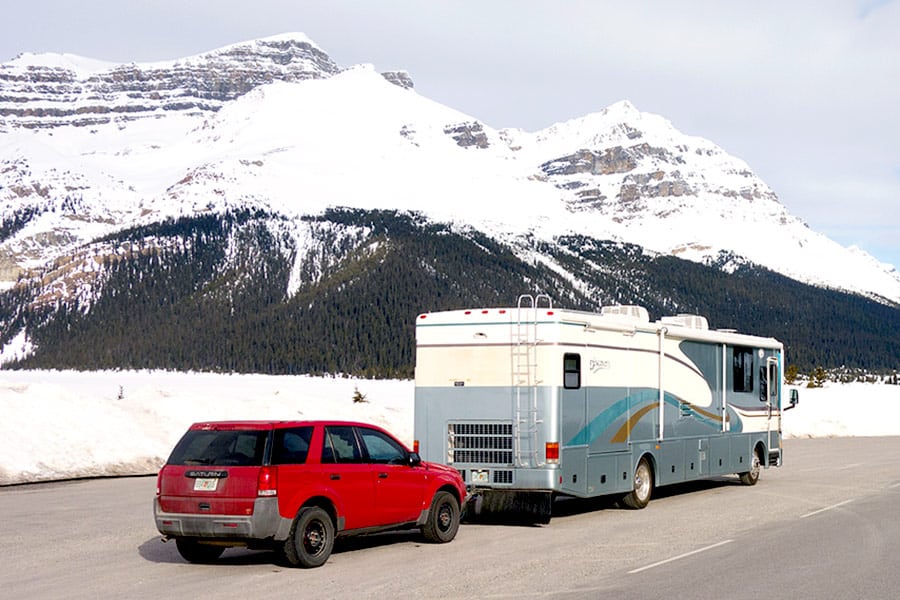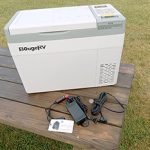
Owning an RV has many perks; the main one is the ability to travel with the conveniences of home. There’s nothing like traveling and seeing the beauty that nature has to offer. However, there are things that you should know about your RV, such as the holding tanks and heating them in freezing temperatures.
How do you heat RV holding tanks? Heating an RV holding tank is an easy process, by simply utilizing a tank heating pad. While a holding tank heating pad may not be standard equipment on your RV, installing one is an easy step to ensure that your RV holding tank contents are kept warm in freezing temperatures.
RV holding tanks need to have warmth, especially if you are camping in the winter, or if you do not drain the tanks during off-season storage. In either case, if temperatures drop low enough and your RV holding tanks are not heated, you could be dealing with frozen pipes and frozen holding tanks.
Heating Pads Are Easy
Keeping your RV, holding tanks warm during cold weather, is a project that most DIYers can tackle by applying a heating pad to a tank, then connecting a few wires and a switch. This post will give you the fundamental steps to take.
The heating pad you choose to buy will also come with installation instructions. YouTube has some installation videos to watch that can help you understand the process better. I have embedded a couple of those videos a little further down in this post.
The first step to heating pad installation is the information portion. You should know how the heating pads work and which one would be best for you.
Most heating pads connect into your 12V DC electrical grid in your RV. However, there are also available combination AC/DC voltage tank heaters that run on the RV’s electrical and can also be plugged into a portable generator or a campground’s 120V power.
The heating pad size is dependant on the size of your tank. For most installations, one heating pad per tank should be adequate, check the tank capacity usually listed somewhere in the RV’s specifications.
If you are unable to find the tank’s capacity, measure the tank’s length, width, and average height in inches and multiply together to find the estimated volume, then divide by 231 to calculate the gallons.
For example, a tank 36 inches long by 24 inches wide by 12 inches high, the volume is 10,368 cubic inches, divided by 231 (the number of cubic inches in a gallon) it equals approximately 44.88 gallons.
Other Posts of Interest
- What is Shore Power In An RV?
- 21 Tips to Get the Most Out of Your Van Camping Trip
- Camping Gas vs. LPG: Is There A Difference?
RV Holding Tank Types
There are three different types of RV holding tanks in most RV plumbing systems. Knowing the function of each tank is extremely useful for the correct usage and maintenance of each. Emptying the tanks is not a job most people look forward to, but it is a necessary one none the less.
- Freshwater tank: This tank is for clean water, and it supplies potable water to all the facilities on your RV.
- Greywater tank: This is the tank that collects water from your shower and sink. There are usually some particles that make the water unclean, such as soap, food, etc.
- Blackwater tank: This is the tank that collects water from your toilet. This sewage water needs to disposed of in a dump station.
Each tank should have a heating pad to avoid the pipes and RV holding tanks from freezing. Tanks can begin to freeze at temperatures below 35 degrees Fahrenheit. When your RV holding tank freezes, you could be looking at problems when trying to get the wastewater out of them. That could be an unpleasant mess.
Installation of Heating Pads
After selecting which size heating pad and what type of energy you want to use, you will need to install the heating pad. Installation instructions will most likely be provided to you when you buy the heating pad, but if not, here are some tips. Remember, each heating pad may be a little different.
You should take your heating pad and plan out where it is going to go on the RV holding tank. Many people suggest that you apply the heating pad to the bottom of the tank by the pipes. You can attach the heating pad to the tank with the sticky side and pressing firmly. Do not stretch the pad.
Why place it on the bottom of the tank? Proper placement will help keep the discharge gate valves from freezing. It’s also the lowest point of the tank where the fluid runs out and will ensure that when you are trying to empty the tank that it will work properly.
Before you begin the installation, wash the area where you plan on attaching the heating pad with soap and water to get rid of any dirt and debris, then wipe dry with a clean rag. Lastly, clean the area thoroughly with isopropyl alcohol and allow to dry completely.
Different Tank Design
Depending on your RVs make and model, the installation process may be somewhat different. Again, it’s a good idea to know which heating pad to buy, what type of holding tank you have, and where to put it. Check the manual or contact the dealer for information about your RV and what heating pad will work for you.
For example, you might find your tank might have stiffening ribs in it. Some tanks are designed differently for different models of RVs. If your tank has stiffening ribs, you can apply the heating pad into that depression. Just make sure it sticks the whole way down and is attached firmly. See the video below.
As with everything, always double-check your measurements to avoid buying the wrong size of a heating pad. The right size pad installed correctly will prevent the RV holding tanks from freezing.
Heating Pads are Essential
Heating pads are essential to keep your RV holding tanks from freezing. Making sure that your RV holding tanks do not freeze is a necessary precaution.
If you live in an area that varies in temperature or has freezing temperatures frequently, you are going to need heating pads. If you expect to go camping during the winter months, you will need a heating pad on your RV holding tanks to keep them from freezing and busting.
There are some RVs out there that have the freshwater tank inside the living area; as long as you are keeping the RV warm, the tank should also stay warm enough not to freeze. However, it might be advisable to install a heating pad anyway. You know the saying “better to be safe than sorry.”
Heating Pad Safety
Some tank heater manufacturers recommend that you always switch the tank heaters off when there is no fluid within the tank, whenever the temperature rises and remains above freezing, and while emptying the tank during dumping. Failure to do so could result in damage.
Other Ways to Help with Freezing
Heating pads are essential and straightforward, but they are not the only way that can help keep the RV holding tanks or pipes from freezing. Here are a couple of other ways to help minimize the effects of cold temperatures on RV holding tanks.
Use caution if applying these suggestions. If there is liquid in your RV holding tanks, it’s always best to ensure that you have a proper heat source. The exception would be unless you are winterizing your RV by emptying all the water and waste from the tanks.
Heat Tape
Heat tape is another thing that you can do to help keep your RV holding tank discharge pipes stay warm. Heat tape can be bought at most home improvement stores and is relatively cheap. To apply, take the tape off the roll and fasten it to any pipes where water flows. Be sure that the heat tape is compatible with the type of water lines you have in your RV.
Winterizing and Antifreeze
Again, winterizing is the other way to keep the RV holding tanks from freezing. Winterizing is a simple method of protecting your RV when you are not using it in the wintertime. You will need to flush out all water lines and pipes that use water. Then you add the RV antifreeze down all pipes and into the RV holding tanks. See the video below.
Summing Up
An RV is a marvelous way to enjoy seeing the sights around the country. However, as with your home, there are specific tasks that you need to do to keep your RV in good working condition.
Some preventative maintenance can save you a lot of money and headaches down the road. Keeping your RV tanks warm will prevent cold weather freezing problems and what could be a messy and costly repair later on.






